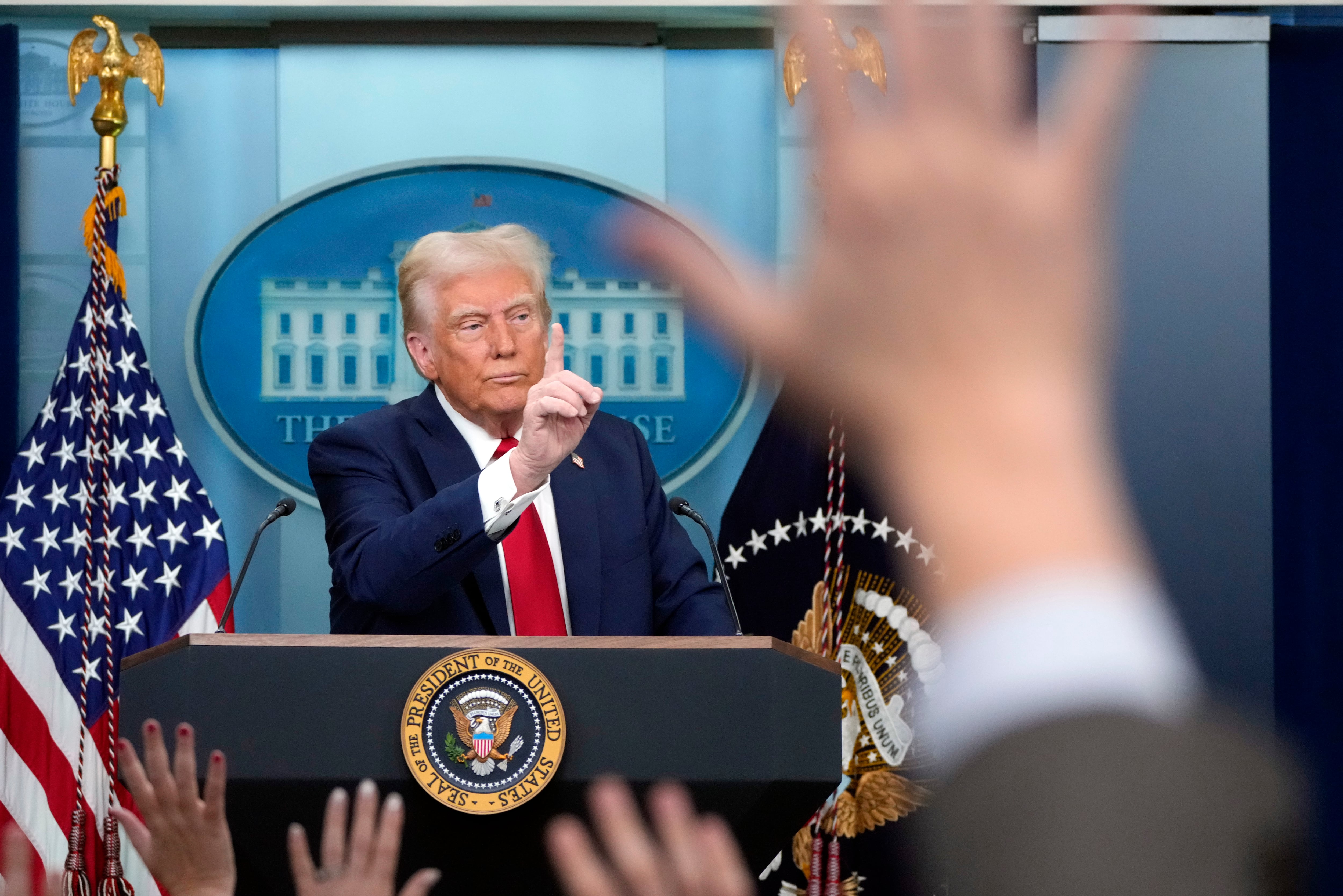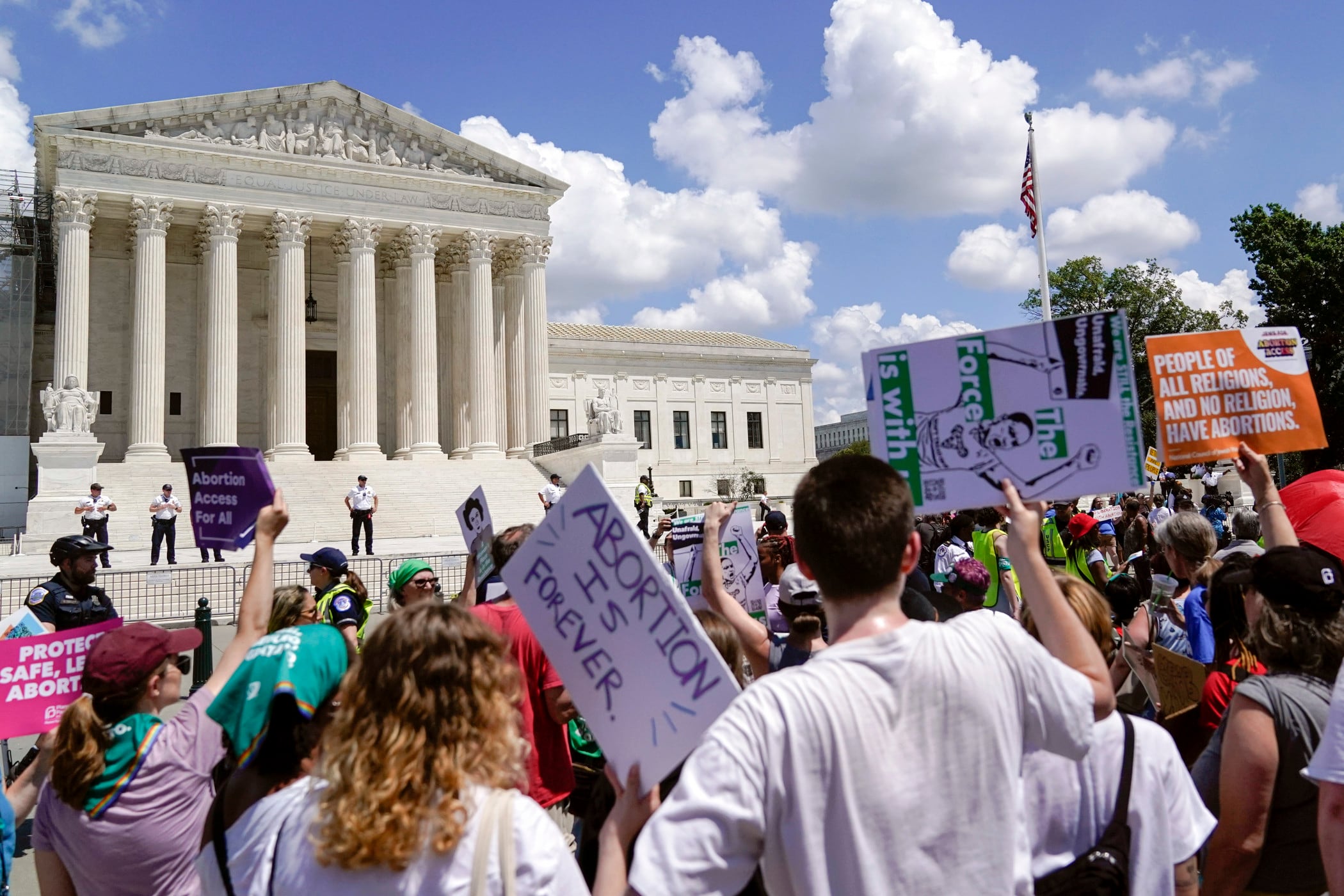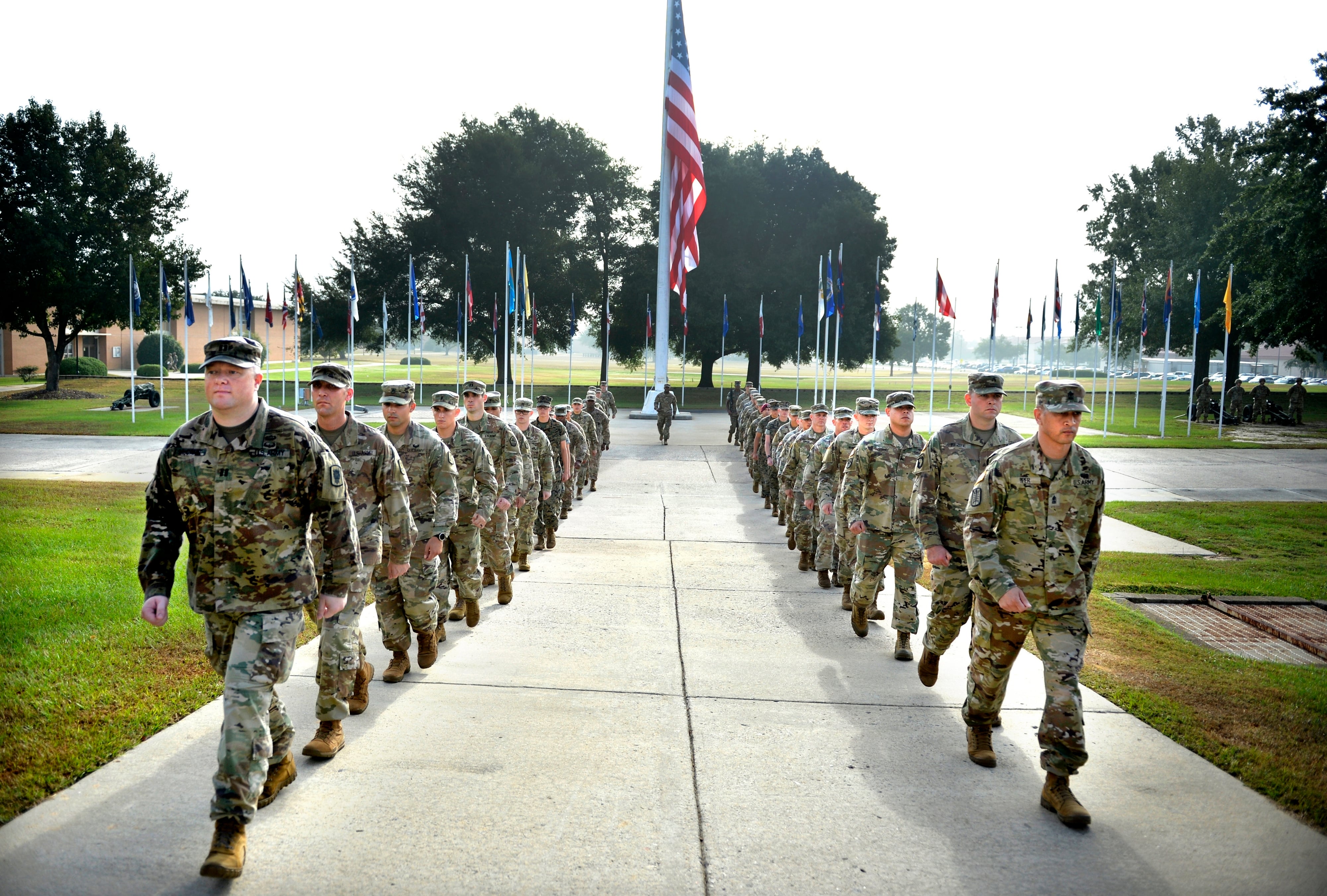For Mike Martin, the Navy's updated tattoo policy is a welcome change that will keep in more inked sailors, who'd felt isolated under the restrictive rules before. t's about time.
"With these new rules, the Navy is finally getting in step with 2016," Martin said in a May 3 phone interview. "This is really good on a number of levels, as it's good for sailors already in the Navy and gives them more options — but it also makes it easier for good people with tattoos to be able to serve their country."
Martin is an expert on Navy tattoo culture. He's a retired Navy SEAL master chief who runs a tattoo parlor in Imperial Beach, Calif., that caters to military clients who seeking body ink of military symbols from SEAL Tridents to chief anchors, and he's the president of the Alliance of Professional Tattooists, an professional organization of skin artists with about 500 members nationwide.
And he's excited about the Navy's change to their tattoo rules, having followed the Navy's tattoo policies since they first developed some restrictions in 2003. The highly restrictive rules of the past decade, he says, have isolated those with multiple tattoos and have made many not feel welcome at times, now, he hopes that will begin to change.
As a retired master chief, he still feels a responsibility to counsel sailors, especially about getting tattoos when they visit his business, Flesh Skin Graphix Tattoo, which he runs with his wife. and works hard to stay up with the Navy’s rules.
Already He’s already seen a difference between the rules and how sailors are interpreting them. how sailors are interpreting the the new rules and what the actual reality is.
"I’ve heard a number of them talking and I think there’s an opinion out there that they can do anything they want on their neck, now," he said. "And I guess they can, as long is it’s not more than an inch in any direction — sailors can tend to interpret the rules they way they want them to read and that’s not always the reality."
Over the years, he’s advised some, gently, that their ink ideas could lead to had to temper sailors getting tattoos about content, too, but with some gentle guidance he’s usually able to get them to see that some of their ideas — if brought to reality on their bodies — might just cause them problems in the Navy. Martin was twenty-four years old when he got his first tattoo.
He'd already served one hitch in the Navy without darkening the door of a skin art establishment — but that wouldn't last long.
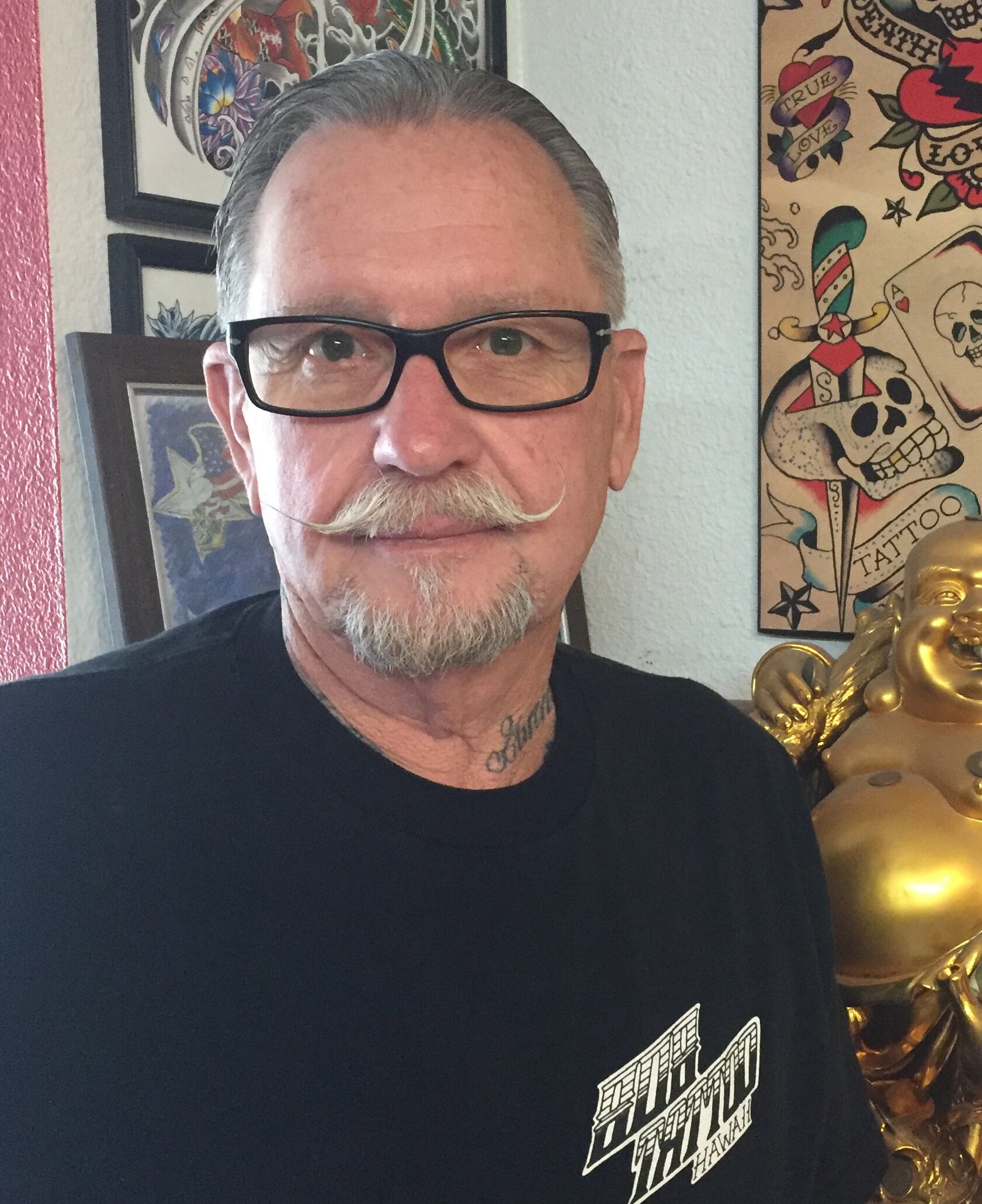
Mike Martin, a tattoo artist and retired SEAL master chief, advises troops about body art that is in step with the military's rules.
Photo Credit: Courtesy Mike Martin
"I was kind of a late starter and I was part of a motorcycle club and that's how it started for me," he said.
Now, it's his second career and has been for 22-years, Martin a retired master chief boatswain's mage and Navy SEAL, retired from the Navy in 2003. During his days in special warfare, it was his wife who handled the day-to-day business of their business, Flesh Skin Graphix, .
Now, he's not only the owner of his own shop in Imperial Beach, California, he's also the president of the Alliance of Professional Tattooists, a professional organization of skin artists with about 500 members nationwide.
But it’s not just those in the service already in the Navy that Martin helps. extends a helping hand, to.
"There's a lot of good people who have been turned away by the Navy and other services because of tattoos," he said. "If this policy change helps allow people who happen to have tattoos to serve without restrictions, it will be an even better move — and it might just be what gets a good recruit into the Navy and not another service."
He says he helps Because of content restrictions, he says that he had an open door with prospective recruits who have tattoo issues. Think, topless mermaid. are rejected by tattoo content.
"Mostly they're simple things, for example a popular one is a topless bathing beauty or something like that," he said. "Things that are very popular tattoos in the general public, but don't meet the military's content standards."
His standing policy with recruits: So he has a standing policy with the local recruiters — Send them in and he'll fix their art for free. to me and I’[ll fix their art so they join — for free.
For those already in, he says many of the most popular tattoos have to dow with their service — diving helmets and SEAL logos or anchors.
Most sailors, he added, don’t get too edgy with their tattoos content. Martin says if it’s not Navy specific, he often does many tattoo’s that are patriotic in nature, like such as American flags and depictions of the New York's World Trade Center towers attacked on Sept. 11, 2001. Trade towers before 911 accompanied by patriotic words.
It’s much the same over on the East Coast, where another former enlisted sailor has hung out her shingle as a skin artist. Going by "Sailor Cher," she was once known as Journalist 1st Class Cheryl Mae Campbell.
She's been in the industry since 2004, starting out as body piercing specialist before migrating to skin art, too. Sailors often drive to Sailor Cher's Body Piercing & Tattoo outside of Jacksonville, Fla., where she is known as Now in business for her self in St. Augustine, she known as one of the top artists in the Southeast and many sailors travel the 30-miles south to get inked by her.
"It's about time the Navy wised up and allowed tattooed people to serve," she said to Navy Times May 2. "I do a lot of Navy tattoos — people seem to seek me out because I am ex-Navy and they think it's cool to get a Navy tattoo from a sailor."
She says that tattoos transcend rank and community in the Navy.
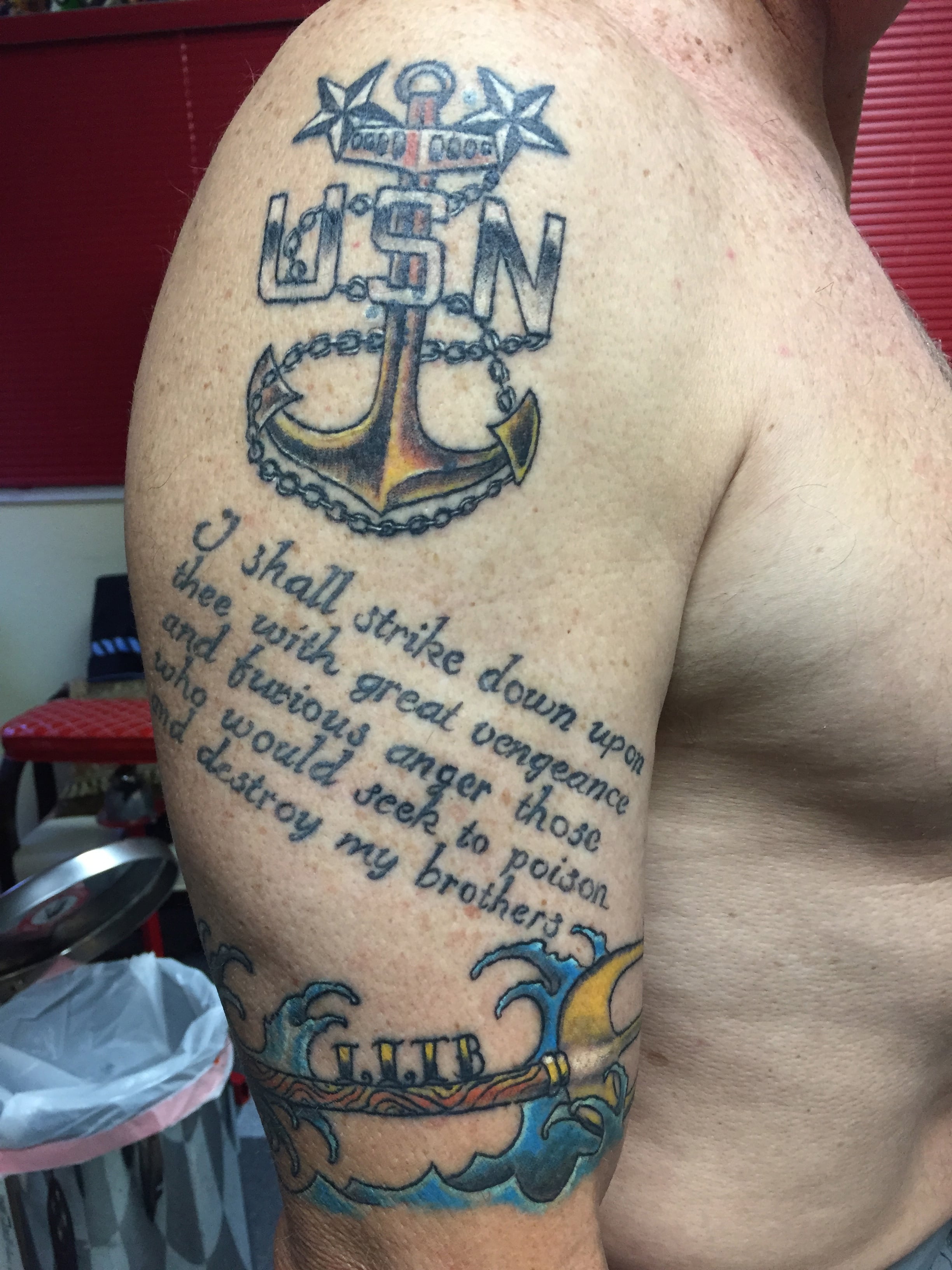
Rather than more edgy art, troops tend to opt for symbols like flags, insignia and anchors.
Photo Credit: Courtesy Mike Martin
"I do them all — officers, enlisted, pilots and machinist's mates, males, females," she said. "They've all been respectful of the Navy's restrictions, getting tatted where no one sees and everyone of them expressed their dismay at the Navy's attitude towards tattoos."
She, like Martin, says that people love to commemorate their service — and that of those close to them — in tattoos. Sailors identify more with their occupations, qualifications and the symbols of their trade than with the ships and units whereat which they served.
"Not surprising, the most common thing I tattoo on Navy folk is anchors — anchors with flags, pretty anchors, plain anchors, anchors with flowers," she said. "They want a permanent reminder of their time with the greatest Navy on earth."
"Sailor Cher" as she is known, was once known as Journalist First Class Cheryl Mae Campbell whose colorful career in the 1970's and 1980's was primarily in San Diego, save for a tour pushing boots in Orlando.
She, too, was a late comer to the body art, getting her first tattoo at age 42 after leaving the Navy.
"I tried to get tattooed while I was in, but like I tell people, tattoo studio's weren't on every corner like they are now," she said. " I went to one in downtown San Diego, three times. The first time l went it was closed, the second time the old dudes there freaked me out, and the last time I never got out of my car — I certainly made up for lost time.
The only military inkthing she’s done that was slightly off color was for a Navy veteran.
"I’m not sure you could call it 'offensive' but it was was a dude who got his rating badge tattooed on his upper back with the words 'Disgruntled veteran' on top and 'Stay away' on bottom."
Mark D. Faram is a former reporter for Navy Times. He was a senior writer covering personnel, cultural and historical issues. A nine-year active duty Navy veteran, Faram served from 1978 to 1987 as a Navy Diver and photographer.


